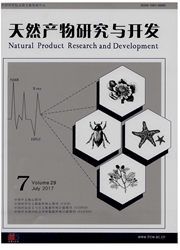

 中文摘要:
中文摘要:
雌激素在机体生长发育中发挥着重要作用,其合成代谢紊乱会导致乳腺癌和骨质疏松等疾病发生。目前,基于细胞的雌激素合成筛选模型需用到放射性底物,对环境污染大,成本较高,限制了具有组织特异性调控雌激素合成的药物筛选。我们以高表达芳香化酶的KGN细胞为检测对象,比较基于聚苯乙烯酶联免疫法和磁微粒分离酶联免疫法的雌二醇ELISA试剂盒的交叉反应和灵敏度,发现相对于聚苯乙烯酶联免疫法,磁微粒分离酶联免疫法能够稳定高效的检测雌激素合成。进一步比较培养基中酚红和底物睾酮对雌二醇检测的影响,成功建立通过磁微粒酶联免疫法检测KGN细胞雌二醇合成的筛选模型。
 英文摘要:
英文摘要:
Estrogens play important roles in the growth and development of human, and the disorders of estrogen biosyn- thesis and metabolism can lead to occurrence of many diseases such as breast cancer and osteoporosis. Currently, the cell-based screen models for estrogen biosynthesis need the use of radioactive substances, which cause environmental pollution and the cost for screening too high tO be affordable,thus severely restrict the finding of new drugs to modulate estrogen biosynthesis in a tissue-specific manner. By using human granulosa-like KGN cells which express high amount of aromatase, we found that the 17β-estradiol magnetic particle-based enzyme-linked imminosorbent assay (ELISA) was more stable and sensitive than conventional polystyrene-based ELISA in quantification of 17β-estradiol by comparing the cross-reactivity and sensitivity of the two different 17β-estradiol ELISA methods. After further examining the effects of phenol red in cell culture medium and testosterone substance concentration on the quantitative detection of 17β-estradiol ,we successfully established a human granulosa-like KGN cell-based screen platform for estrogen biosynthesis by using magnetic particle-based ELISA.
 同期刊论文项目
同期刊论文项目
 同项目期刊论文
同项目期刊论文
 Analysis of benzofuran derivatives using electrospray ionization ion trap and electrospray ionizatio
Analysis of benzofuran derivatives using electrospray ionization ion trap and electrospray ionizatio 期刊信息
期刊信息
